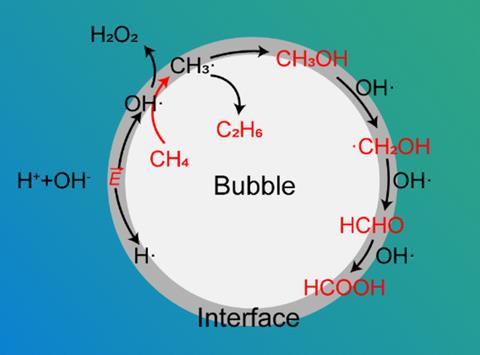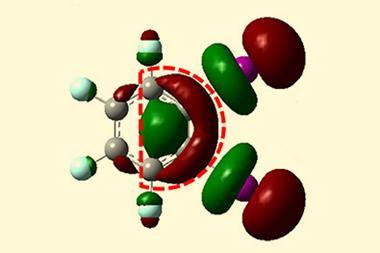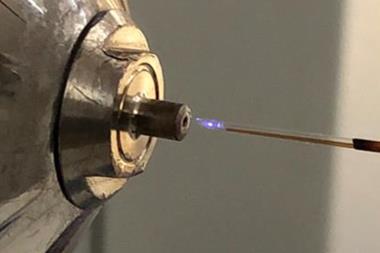Microbubbles can activate C–H bonds in methane under mild conditions to produce ethane and formic acid. That’s according to new research led by Richard Zare of Stanford University in the US.
Recent years have seen Zare’s team devote itself to showing how water microdroplets can dramatically accelerate chemical reactions and trigger chemical transformations that do not occur in bulk water. Now, the team has turned its attention to microbubbles.
‘I regard gas microbubbles in water to be inside-out water microdroplets,’ explains Zare. ‘In normal microdroplets, the water and whatever is dissolved in the water is on the inside and the gas is on the outside. In inside-out microdroplets, that is, microbubbles, the gas is on the inside and water and whatever is dissolved in the water is on the outside.’
In this new research, they show that water microbubbles can spontaneously oxidise methane. Their experimental set up combines a circulating water pump, a sealed reaction vessel and a microbubble generator. The reaction gas – in this case methane – is drummed into the reaction vessel for 30 minutes prior to the start of the reaction to displace the original gas in the vessel. Deionised water flows at high-speed through the microbubble generator, reducing the internal pressure of the system. Consequently, gas in the reaction vessel enters the microbubble generator and is then released as microbubbles into the water.
The team conducted initial experiments to test the oxidative capabilities of their microbubble system. They spiked deionised water with the probe 10-acetyl-3,7-dihydroxyphenoxazine, which is easily oxidised to the highly fluorescent compound resorufin. Fluorescent microscope images reveal the formation of bubbles with diameters smaller than 50μm and also confirm that these microbubbles possess oxidative capabilities. They then used analytical techniques including electron spin resonance, high-resolution mass spectrometry and gas chromatography to demonstrate the overall stability and efficiency of the microbubble system. Further experiments showed that this microbubble system was stable over a continuous period of eight hours and could achieve a methane activation rate of up to 6.7% per hour.
Zare says the chemistry of microbubbles is similar to that of water microdroplets: ‘The common theme is that the air–water interface is where the action is.’ Hydronium ions and hydroxide ions are thought to undergo electron transfer due to partial solvation effects and an electric field at the air–water interface. This generates hydrogen radicals and hydroxyl radicals that sequentially activate methane to form methyl radicals. The free radicals combine at the air–water interface to furnish ethane and formic acid. ‘Once you have radicals, then you have a symphony of chemistry,’ exclaims Zare.

‘These findings deepen our understanding of the physical chemistry of gas–liquid interfaces’, comments AJ Colussi, a physical chemist at Caltech in the US. He finds it interesting that hydroxide and hydronium ions also exchange electrons on the surface of ascending bubbles, rather than recombining as in bulk water. ‘Since energy is required to inject bubbles at the bottom of a water column, what is missing from this work is an assessment of the energy efficiency of these experiments for oxidising methane relative to more conventional methods. The assessment is essential regarding the realism of the scalability proposal,’ Colussi adds.
‘It costs much less energy to bubble a gas through water than to spray water into a gas. This gives hope that these processes might be economically scaled up to an industrial level rather than be just a laboratory curiosity,’ concludes Zare.












No comments yet